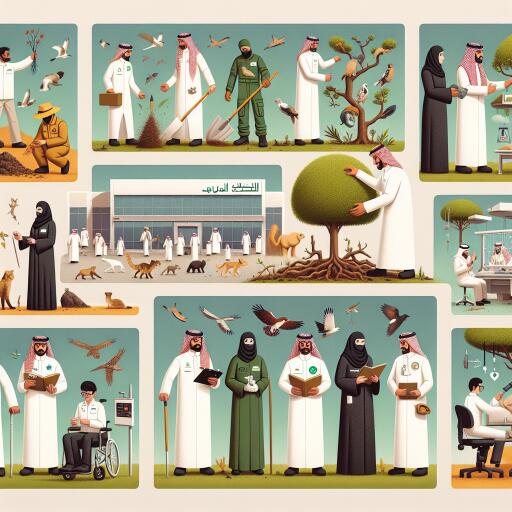
How Saudi Organizations Are Building a Sustainable Future for Wildlife
Saudi Arabia is establishing itself as a pioneer in global biodiversity conservation through groundbreaking measures targeting endangered species preservation and ecosystem restoration. This forward-thinking approach underscores the Kingdom’s commitment to safeguarding its natural legacy for future generations while striking a balance between environmental stewardship and economic growth.
One of the significant milestones in this ongoing effort occurred on December 23, 2024, when the National Center for Wildlife (NCW) released 66 endangered animals into the King Khalid Royal Reserve, situated northeast of Riyadh. The release featured species such as 40 rhim gazelles, 10 Arabian oryx, 10 Houbara bustards, and six Idmi gazelles. This initiative, executed in concert with the Imam Abdulaziz bin Mohammed Royal Reserve Development Authority, aims to restore ecological equilibrium, enhance biodiversity, and stimulate eco-tourism.
To bolster the success of this program, some of the released animals are equipped with solar-powered tracking devices, enabling researchers to observe their adaptation and behavior in their natural habitat.
A monumental achievement also occurred at the Arabian Leopard Conservation Breeding Centre in Taif this month, with the birth of a rare litter of Arabian leopard triplets. This birth, the first recorded triplet delivery of this critically endangered species in Saudi Arabia, adds a vital chapter to the Kingdom’s conservation narrative led by the Royal Commission for AlUla (RCU).
With fewer than 120 Arabian leopards remaining in the wild, these efforts are crucial. The RCU’s conservation initiative started gaining momentum through strategic partnerships and a rigorous breeding program aimed at boosting species populations, improving genetic diversity, and advancing research. The breeding center currently houses over 32 leopards and has become a beacon of hope for conservationists worldwide.
The center follows meticulous protocols for pregnant leopards, ensuring a safe and stress-free environment, with veterinary teams ready for intervention if complications arise. These efforts are about more than just species survival; they are about maintaining ecological balance and preserving cultural heritage.
The Arabian leopard plays an essential role in ecosystem health, acting as a regulator of prey populations. Beyond ecological significance, the species holds deep cultural importance within Saudi Arabia, making its preservation a multifaceted endeavor. The ultimate vision is to reintroduce Arabian leopards into their natural habitat, though challenges such as developing survival skills and genetic diversity remain.
Saudi Arabia’s conservation programs extend to other species as well. Under the National Cheetah Reintroduction Program, the Kingdom has seen the birth of four cheetah cubs in captivity, marking a significant advancement given the challenges of breeding this species. Globally, only a small fraction of wild-born cheetahs successfully reproduce in captivity, making these developments even more critical to the survival of a species with dwindling numbers worldwide.
The Arabian oryx story also mirrors significant conservation success. Once declared extinct in the wild by 1972, efforts to reintroduce the species have flourished. By 2019, the wild population had increased markedly, illustrating a dramatic conservation victory for Saudi Arabia. The programs responsible for these achievements leverage state-of-the-art technology and foster global collaboration and community engagement, serving as an international model for wildlife preservation.
Integrative approaches, including initiatives like the Saudi Green Initiative and the Middle East Green Initiative, reflect the Kingdom’s dedication to restoring ecosystems and protecting biodiversity on a broader scale. By reintroducing once absent species and breeding endangered ones in advanced facilities, Saudi Arabia is setting global standards for conservation strategies.
As the world faces unprecedented biodiversity threats, Saudi Arabia’s multifaceted approach showcases that environmental protection and economic development can go hand in hand. These concerted efforts not only preserve the Kingdom’s rich natural heritage but also provide a framework for worldwide action to protect our planet’s most endangered species. Through dedication, innovation, and international collaboration, Saudi Arabia is spearheading a sustainable future for wildlife conservancy.





Leave a Reply